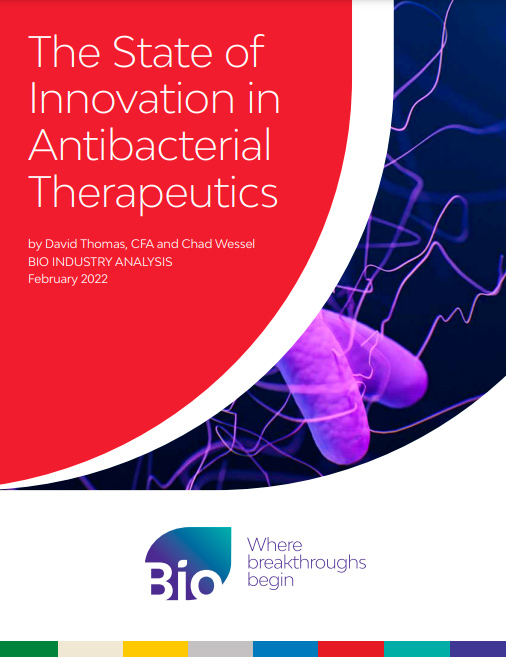05/02/2022
by David Thomas, CFA and Chad Wessel
BIO INDUSTRY ANALYSIS
February 2022
Introduction
Antibacterial drug discovery and development during the 20th century yielded one of the greatest armaments available to physicians, with more than 90% of all antibacterial drugs discovered during this period. Since the introduction of numerous antibiotic classes during the 1940s, deaths from bacterial infections have been reduced significantly. However, this next century is already presenting challenges that may render these older antibiotics obsolete. The COVID pandemic, which exposed multiple preparedness shortcomings, has elevated attention to the increasing threat of drug-resistant strains of bacteria. More than 1.2 million people worldwide are dying each year from antibiotic resistant infections and it is estimated this number will grow to 10 million per year by 2050. In the U.S. alone, more than 2.8 million antibiotic-resistant infections occur each year, with more than 35,000 people dying as a result. The CDC, EMEA, WHO, IDSA, Pew, and other groups have issued warnings to public policymakers for more than a decade about the reduced effectiveness of last century’s antibiotic arsenal (see Appendix A1 for the most recent pathogen threat list from CDC and WHO).
Millions of currently treatable infections could become life threatening as the prior innovative advantage over bacteria wanes in the coming decades. Hospital acquired bacterial infections alone affect 1.7 million patients per year in the U.S., with almost 100,000 dying as a result. A significant portion of these patients acquire Clostridioides difficile, in large part due to taking 20th century antibiotics that harm beneficial bacteria in the human gut. Skin infections affect 14 million patients in the U.S. each year and are responsible for more than 3 million visits to emergency departments. The American Lung Association reports that Streptococcus pneumoniae infects the lungs of 900,000 Americans each year, with other bacteria responsible for even more pneumonia cases. There is also a rising threat from bacterial sexually transmitted diseases. According to a 2019 report by the U.S. CDC, Gonorrhea and Syphilis are at their highest case levels since 1991, and Chlamydia has reached 1.7 million cases. Prior to Covid, the leading cause of death from infectious disease globally was Mycobacterium tuberculosis infection (TB), with 1.6 million deaths resulting from more than 10 million cases per year.
This report investigates recent investment into antibacterial innovation and the current clinical pipeline that will help bridge the gaps in the antibacterial armamentarium. In our previously published research, drug development investment for many common chronic diseases was found to be declining and low relative to total healthcare burden on society. In that survey of under-funded disease areas, antibiotic investment was also found to be low and not trending upward with the rest of the industry. Unfortunately, over the same time period the total number of infections has risen along with more reports of antibiotic resistance. The lack of investor interest can be seen by contrasting venture investment into antibiotics vs. cancer over the last decade (Figure 9). Oncology companies raised close to $7 billion in 2020 (up 900% from 2011), whereas antibiotic companies raised just $0.16 billion (less than what they raised 10 years prior). This prompted the ongoing investigation to expand our analysis beyond privately funded companies. Specifically, we investigate funding industry-wide and determine to what extent this weakness in funding has impacted innovative antibacterial drug candidates.


